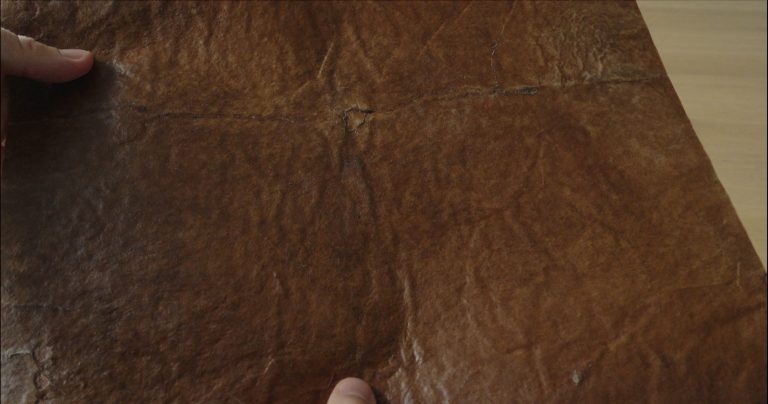Qorium, a leading innovator in cultivated leather, has released footage of its latest lab-grown leather sample, marking a significant milestone in the company’s journey towards commercialising its sustainable production process. The 35x35cm material, created using Qorium’s newly scaled-up tissue bioreactor, is the first tangible proof that the company’s leather production method can be scaled to meet industrial demands.
The lab-grown leather, made by reproducing a small sample of skin cells from a living cow, mirrors the strength, durability, and appearance of traditional animal leather. This innovation represents a breakthrough in the leather industry, offering a sustainable alternative that significantly reduces the environmental impact of leather production while addressing animal welfare concerns.
A Sustainable Solution for Leather Production
Qorium’s lab-grown leather has the potential to revolutionise how leather is sourced and produced. When scaled for commercial use, the material will require only a fraction of the water and energy needed for traditional leather production, as well as eliminating the need to rear and process animals for their hides. This reduction in resource use positions Qorium’s technology as a key player in the growing trend towards sustainability in the fashion and automotive industries.
The Maastricht-based company is already partnering with high-end fashion and automotive brands to co-develop its materials, with plans to become a large-scale supplier in these sectors. By offering a leather alternative that maintains the quality of animal-derived materials, Qorium aims to cater to brands seeking to minimise their environmental impact without compromising on the durability and aesthetics of leather.
Technological Breakthrough for Commercialisation
The recent demonstration of Qorium’s latest sample highlights the success of the company’s efforts to scale its production process. CEO Michael Newton expressed his excitement over the breakthrough, stating, “This sample is tangible proof that a future where high-quality, high-performing leather can be produced on demand, without the animal welfare and environmental disadvantages of traditional material, is just around the corner. The challenge of scaling up the process has been a tough one, and this latest breakthrough is a testament to the hard work of our excellent science and engineering teams.”
Qorium’s process involves taking a small sample of skin cells from a living cow and reproducing them in a lab to create leather. This innovative method has already attracted significant interest, as it aligns with the rising consumer demand for sustainable products.
A Promising Future for Cultivated Leather
Mark Post, the founder of Qorium, emphasised that this development is a key step towards full-scale commercial production. “The fact that with a relatively small team, in a relatively short amount of time, we have been able to create high-quality sheets of leather that demonstrate scalable production processes shows that we’re on track towards having a product that’s ready for market,” he said.
While acknowledging that there is still work to be done in terms of product optimisation and cost reduction, Post expressed optimism about the future of cellular agriculture. The company’s latest funding round has enabled it to expand its team and invest in new equipment, further accelerating progress towards commercialisation.
Qorium‘s lab-grown leather is seen as a breakthrough in cellular agriculture, and its continued progress could position the company as a key supplier in the leather industry, offering a sustainable, animal-free alternative for fashion and automotive brands alike.

